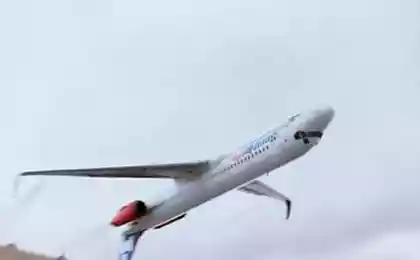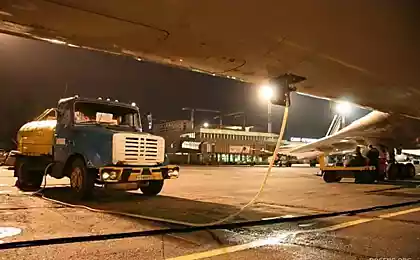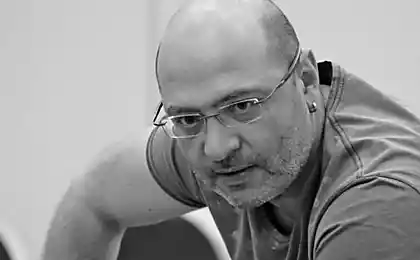935
Tu-154B-1 | RA-85165 is now a mentor
This board has developed its own flight hours. The last flight of the aircraft made from Norilsk to Krasnoyarsk. As an athlete who finishes a career, and after that, at times, become a coach, and this board is now the coach for the students of the Siberian State Aerospace University named after ac. Reshetnev. After all, the end is also a beginning.
24 photos + video.
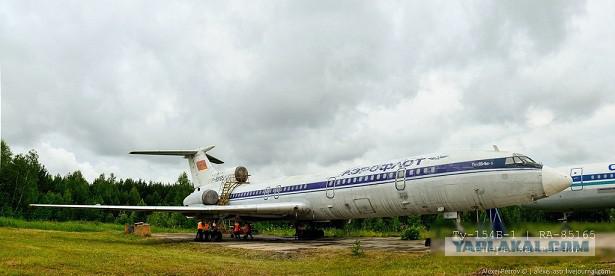
1. Together "Goose" becomes the fuselage.
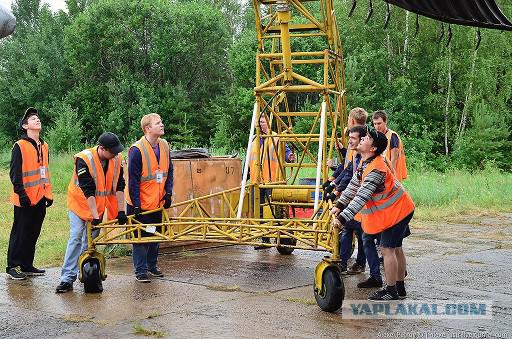
2. Today, present at the preparation for the launch, and the engine starts.

3. How not to use a ladder and climb up to the second engine. "Dizzying panorama»
The length of 47 aircraft, 9 m Wingspan 37 ... 55 m
Wing area 201, 45 square meters ... The diameter of the fuselage 3, 8 m
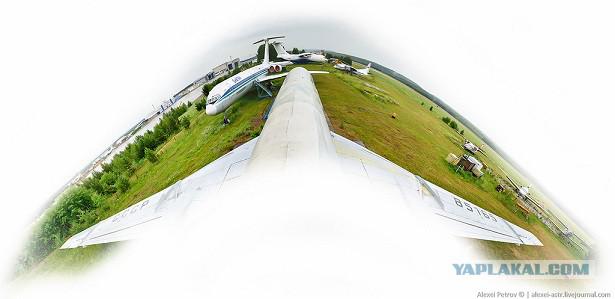
4. Wrap the back and look at the second duct of the engine, all familiar from the film "crew." Total Tu-154B1 in the tail three engines Kuznetsov NK-8-2U, each 10500kgs.
Posted in [mergetime] 1406696169 [/ mergetime]
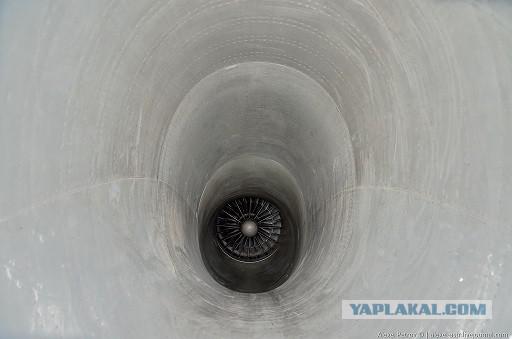
5. Once the board begins with the abbreviation USSR

6. The mounting holes in the base of the nacelle to the fuselage not only performs the role of the coolant but also fire. Purging compartments with engines atmospheric air cools it, and also removes possible pairs of oil, fuel and fluid AMG-10 (aircraft hydraulic oil). Air is supplied to blow the generator, and then cooling the engine released into the atmosphere through the gap between the engine nacelles and cowlings.
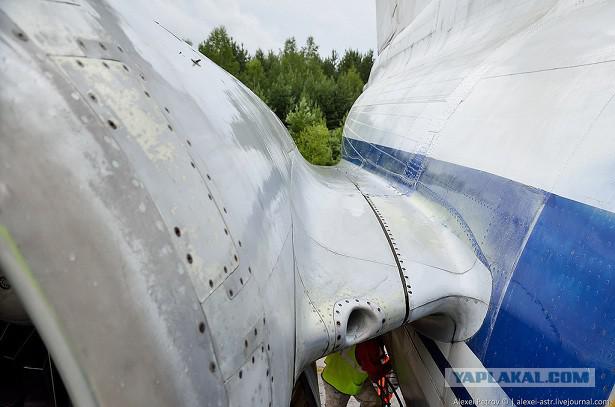
7. The third engine. The maximum diameter of the engine 1, 44 meters. Immediately after the fire is the air intake baffle made of titanium alloy, which is formed like a fan, but does not rotate. Gondola external motors are arranged symmetrically about the axis of the aircraft. To skew the airflow from the fuselage and the wing does not degrade the performance of the air intake and no additional aerodynamic drag, air intake deployed to 3 ° to the side of the fuselage and slightly upward.
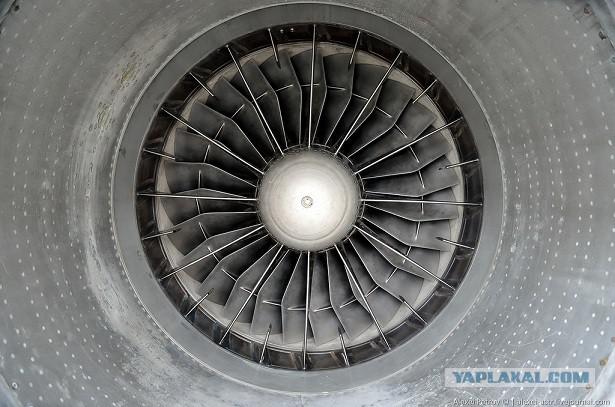
8. The same engine. The length of the engine with a thrust reverser and the nozzle 5, 3 meters. The air intake can be seen wearing rectangular hatches, evenly spaced in a circle. This flap feeding the engine with air, set at NC 8-2U on NK-8-2 no. Designed to improve the efficiency of the air intake at the start and take off. Valves made ungovernable and open into the inlet channel under the influence of low pressure that occurs when takeoff. Then, under the action of return springs in place.
The right to open the hatch in the fuselage, which holds 3 line fire fighting. The first stage is automatically released, the second and third stage of the flight engineer may be discharged manually by selecting than for any engine to defuse it.
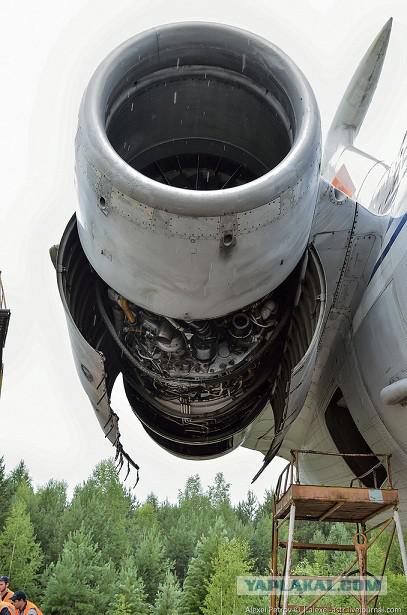
9. The chassis is made on a three-axis truck. In the version of the B-1 have been strengthened.
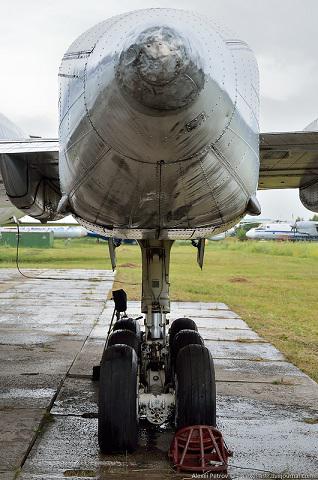
10. Cleaning is done very delicately, in the course of the aircraft.
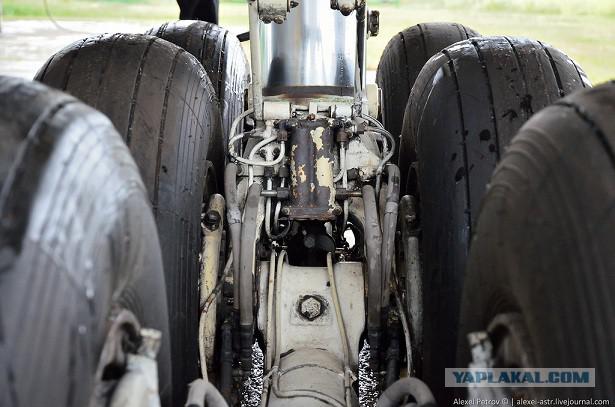
11. And this is the left engine, where the head of the practice, Ochkin Vasily, tells students about the need to check the purity of the engine magnetic plugs. They span from the chip can judge the condition of the engine.
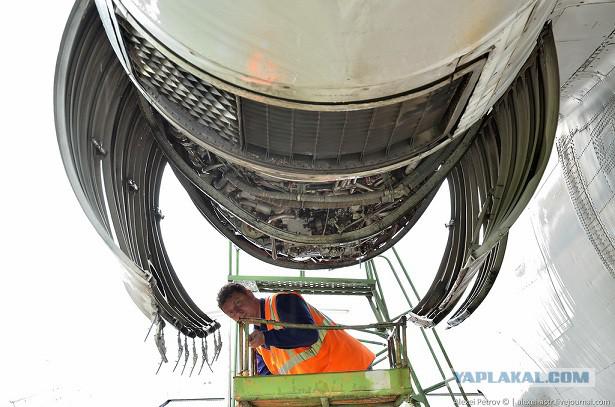
12. Now go to the other side, avoiding any fun thing spotter :) and get inside the fuselage, to look at the second duct of the engine from the inside.
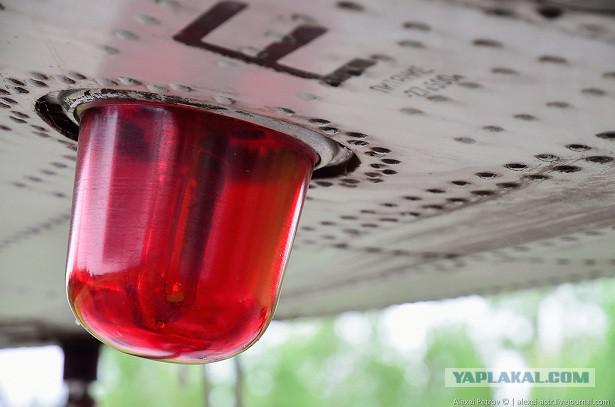
13. In the compartment fire suppression bursts opens another door and we get into the next compartment. Here we have the control cable runs, stop the engine, which is made of rope XAN (Steel rope for aircraft neraskruchivayuschiysya) diameter of 2, 5 mm. The two leftmost cable goes to a second motor, two on the right are the first and end with the end rollers, which are already on the hard rod through the casing to the left (first) engine. The cables coming out of the hermetic output which reduces air leakage from the sealed part of the fuselage. On the cover of O at each hole marked with (yellow sticker), a cable must be removed through it.
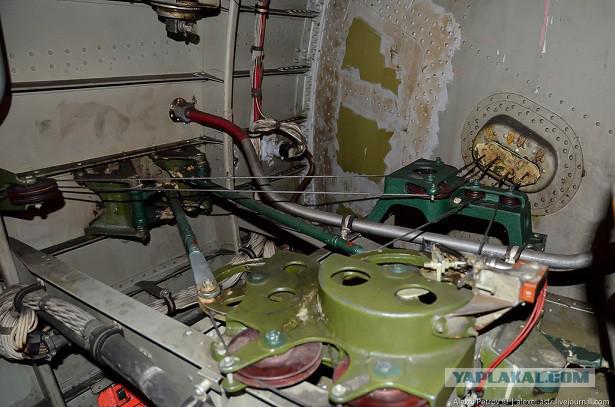
14. Control units for land operations and inspections.
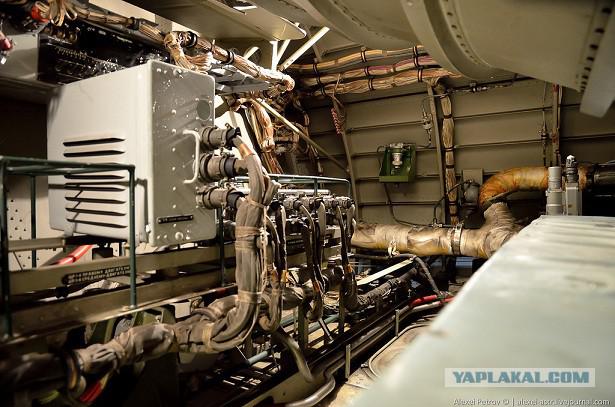
15. The channel of the second engine.

16. "Earth" ready to start the engine.
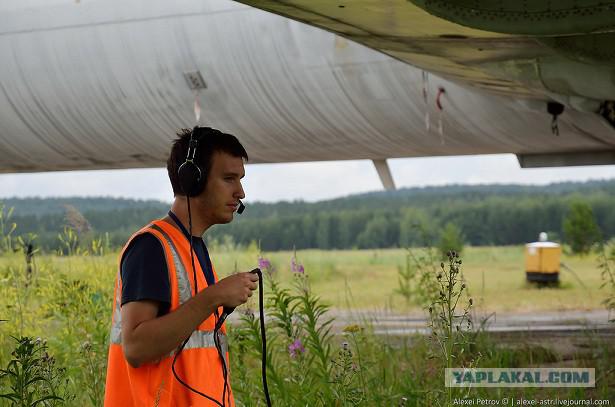
17. Cyril kirill_kvs. We finally climb aboard.
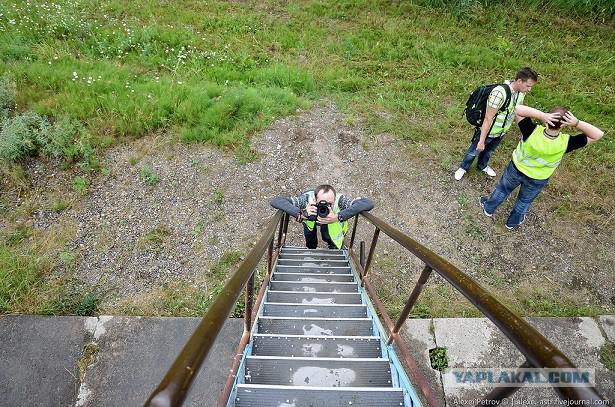
18. Cab domestic aircraft, which can be seen from the windows of a home. Both have a story for civil aviation. But that's okay, I think. We must go forward, and there is not so ...
& Quot; ... Well, here, you know, we have to run as fast just to stay in the same place! Well, if you want to get somewhere else, you must run at least twice as fast! & Quot; Alice in Wonderland, Lewis Carroll ©. I would like to see our aircraft designers ran twice as fast in another way. :)
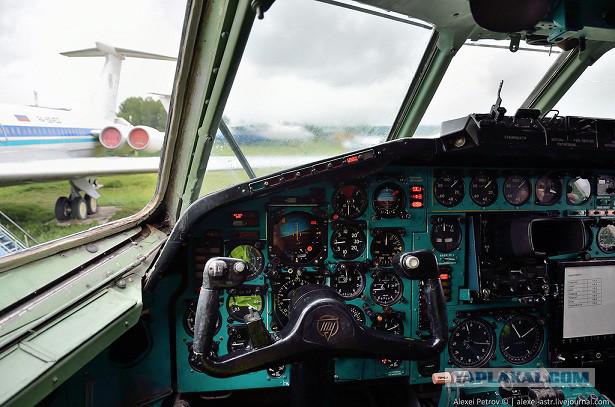
19. The cabin is spacious and comfortable.
From myself: Here I bet! Those who flew in the cockpit, I understand.
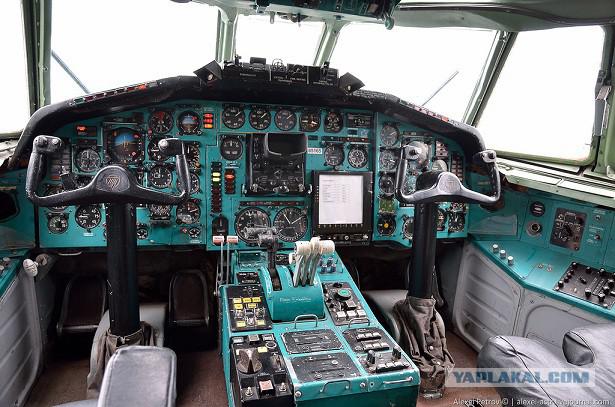
20. Panel flight engineer, here all the information about the engines, fuel, voltage, hydraulic systems, and more.
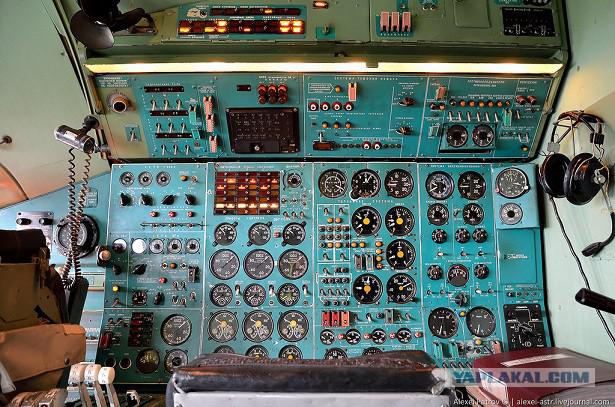
21. What is the station so ...? :)) Paint Aeroflot is so strong that survived bunch recolors and stickers.

22. Hello and you, Cyril! :)

23. Sergey, gisman, already in place in FAC 62nd)
Posted in [mergetime] 1406696555 [/ mergetime]
For the most persistent offers 31 minutes video preparation for the launch and start the engine itself. In the video there is one inaccuracy, which is made consciously. From the cabin I rented the launch of the third and start on the outside of the first engine. Then sync and mounted for clarity. Sound recorder sometimes rolls over, of course, but to stifle them separately could not. PS. Starting begins at 28:00 :)) But I recommend watching the whole, it is a real benefit from the professional
Posted in [mergetime] 1406696597 [/ mergetime]
The second video about the work of mechanization. A total of 4 minutes))
On Tu-154B applied trehschelevye flaps. The presence of the gap to allow flow to flow from the pressure chamber (the lower surface of the wing) in a low pressure area (the upper surface of the wing). The slots are contoured so that the resulting jet of which is directed along the tangent to the top surface and the cross section of the gap has to be narrowed gradually to increase the flow rate. After passing through the slit, the jet of high-energy interacts with the "sluggish" boundary layer and prevents the formation of eddies and flow separation. This event allows "push" stall on the upper wing surface at large angles of attack and great value lift.
Posted in [mergetime] 1406696661 [/ mergetime]
Thank you for your attention.
Good luck!
Everything! Here source

24 photos + video.

1. Together "Goose" becomes the fuselage.

2. Today, present at the preparation for the launch, and the engine starts.

3. How not to use a ladder and climb up to the second engine. "Dizzying panorama»
The length of 47 aircraft, 9 m Wingspan 37 ... 55 m
Wing area 201, 45 square meters ... The diameter of the fuselage 3, 8 m

4. Wrap the back and look at the second duct of the engine, all familiar from the film "crew." Total Tu-154B1 in the tail three engines Kuznetsov NK-8-2U, each 10500kgs.
Posted in [mergetime] 1406696169 [/ mergetime]

5. Once the board begins with the abbreviation USSR

6. The mounting holes in the base of the nacelle to the fuselage not only performs the role of the coolant but also fire. Purging compartments with engines atmospheric air cools it, and also removes possible pairs of oil, fuel and fluid AMG-10 (aircraft hydraulic oil). Air is supplied to blow the generator, and then cooling the engine released into the atmosphere through the gap between the engine nacelles and cowlings.

7. The third engine. The maximum diameter of the engine 1, 44 meters. Immediately after the fire is the air intake baffle made of titanium alloy, which is formed like a fan, but does not rotate. Gondola external motors are arranged symmetrically about the axis of the aircraft. To skew the airflow from the fuselage and the wing does not degrade the performance of the air intake and no additional aerodynamic drag, air intake deployed to 3 ° to the side of the fuselage and slightly upward.

8. The same engine. The length of the engine with a thrust reverser and the nozzle 5, 3 meters. The air intake can be seen wearing rectangular hatches, evenly spaced in a circle. This flap feeding the engine with air, set at NC 8-2U on NK-8-2 no. Designed to improve the efficiency of the air intake at the start and take off. Valves made ungovernable and open into the inlet channel under the influence of low pressure that occurs when takeoff. Then, under the action of return springs in place.
The right to open the hatch in the fuselage, which holds 3 line fire fighting. The first stage is automatically released, the second and third stage of the flight engineer may be discharged manually by selecting than for any engine to defuse it.

9. The chassis is made on a three-axis truck. In the version of the B-1 have been strengthened.

10. Cleaning is done very delicately, in the course of the aircraft.

11. And this is the left engine, where the head of the practice, Ochkin Vasily, tells students about the need to check the purity of the engine magnetic plugs. They span from the chip can judge the condition of the engine.

12. Now go to the other side, avoiding any fun thing spotter :) and get inside the fuselage, to look at the second duct of the engine from the inside.

13. In the compartment fire suppression bursts opens another door and we get into the next compartment. Here we have the control cable runs, stop the engine, which is made of rope XAN (Steel rope for aircraft neraskruchivayuschiysya) diameter of 2, 5 mm. The two leftmost cable goes to a second motor, two on the right are the first and end with the end rollers, which are already on the hard rod through the casing to the left (first) engine. The cables coming out of the hermetic output which reduces air leakage from the sealed part of the fuselage. On the cover of O at each hole marked with (yellow sticker), a cable must be removed through it.

14. Control units for land operations and inspections.

15. The channel of the second engine.

16. "Earth" ready to start the engine.

17. Cyril kirill_kvs. We finally climb aboard.

18. Cab domestic aircraft, which can be seen from the windows of a home. Both have a story for civil aviation. But that's okay, I think. We must go forward, and there is not so ...
& Quot; ... Well, here, you know, we have to run as fast just to stay in the same place! Well, if you want to get somewhere else, you must run at least twice as fast! & Quot; Alice in Wonderland, Lewis Carroll ©. I would like to see our aircraft designers ran twice as fast in another way. :)

19. The cabin is spacious and comfortable.
From myself: Here I bet! Those who flew in the cockpit, I understand.

20. Panel flight engineer, here all the information about the engines, fuel, voltage, hydraulic systems, and more.

21. What is the station so ...? :)) Paint Aeroflot is so strong that survived bunch recolors and stickers.

22. Hello and you, Cyril! :)

23. Sergey, gisman, already in place in FAC 62nd)
Posted in [mergetime] 1406696555 [/ mergetime]
For the most persistent offers 31 minutes video preparation for the launch and start the engine itself. In the video there is one inaccuracy, which is made consciously. From the cabin I rented the launch of the third and start on the outside of the first engine. Then sync and mounted for clarity. Sound recorder sometimes rolls over, of course, but to stifle them separately could not. PS. Starting begins at 28:00 :)) But I recommend watching the whole, it is a real benefit from the professional
Posted in [mergetime] 1406696597 [/ mergetime]
The second video about the work of mechanization. A total of 4 minutes))
On Tu-154B applied trehschelevye flaps. The presence of the gap to allow flow to flow from the pressure chamber (the lower surface of the wing) in a low pressure area (the upper surface of the wing). The slots are contoured so that the resulting jet of which is directed along the tangent to the top surface and the cross section of the gap has to be narrowed gradually to increase the flow rate. After passing through the slit, the jet of high-energy interacts with the "sluggish" boundary layer and prevents the formation of eddies and flow separation. This event allows "push" stall on the upper wing surface at large angles of attack and great value lift.
Posted in [mergetime] 1406696661 [/ mergetime]
Thank you for your attention.
Good luck!
Everything! Here source




